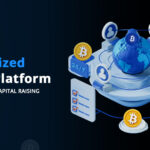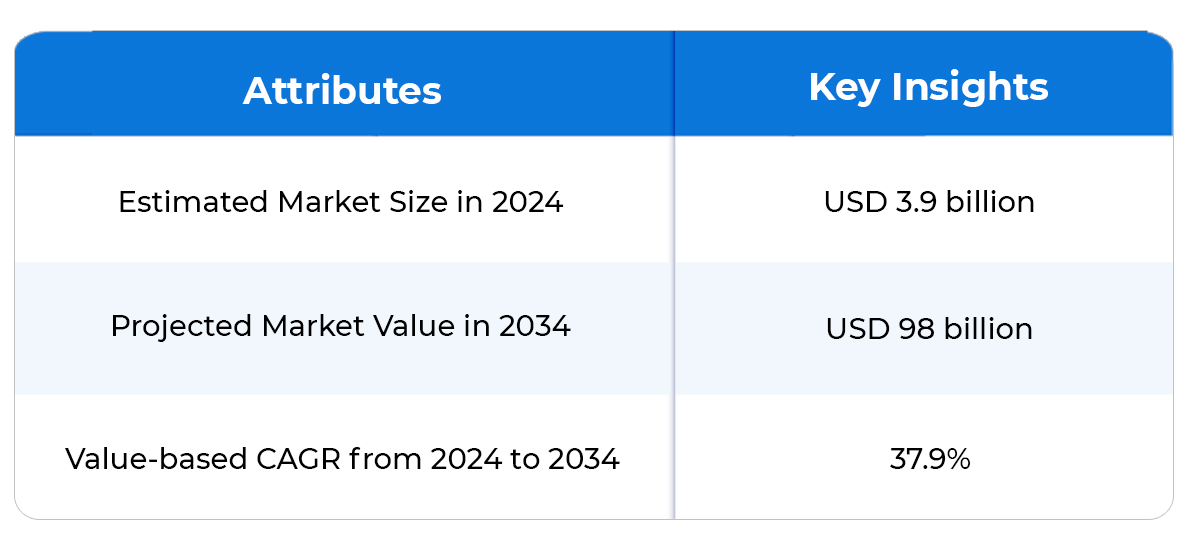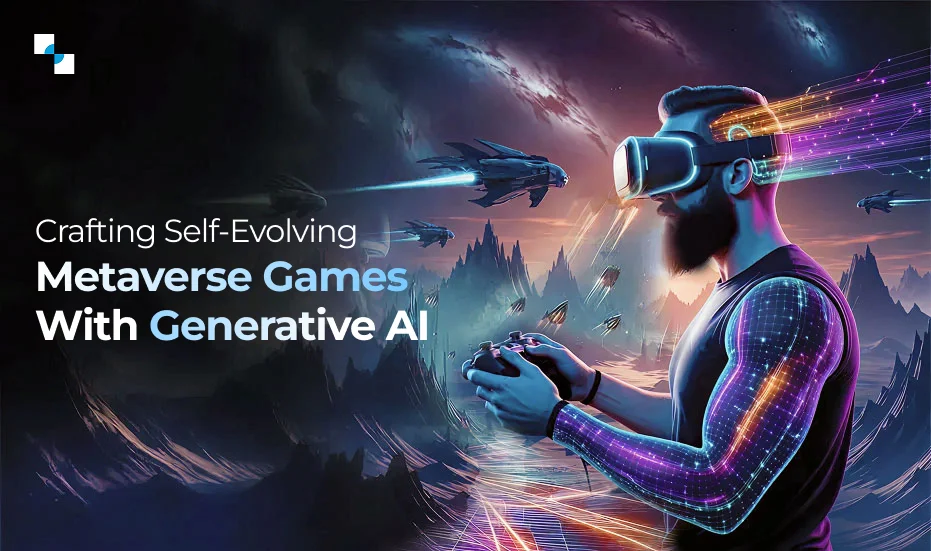The global shift toward digital learning accelerated post-pandemic, but traditional online platforms lack interactivity and engagement. Advancements in immersive technologies like the metaverse platform for education drive this seismic shift As institutions grapple with outdated assessment methodologies, the integration of a virtual learning platform development framework promises to revolutionize how exams are conducted, evaluated, and experienced. This article explores how businesses and educational institutions can leverage the metaverse for education to streamline exam assessments, ensuring fairness, engagement, and scalability.
Focused to inspire decision-makers, this blog delves into the technical, strategic, and operational facets of building a metaverse-driven assessment ecosystem. From addressing cheating risks to enabling real-time feedback, we unpack actionable insights for creating a future-ready educational infrastructure. Let’s dive in.
How the Metaverse in Education Transforms Traditional Learning Models?
Education has transitioned from chalkboards to Zoom classrooms, yet exam assessments remain largely unchanged. Traditional methods—paper-based tests, multiple-choice quizzes, and in-person proctoring—struggle to address modern challenges like remote learning scalability, student anxiety, and academic dishonesty.
Pain points in conventional systems:
- Limited Scope: Conventional exams primarily test theoretical knowledge, ignoring practical skills.
- Cheating and Fraud: Paper-based tests are vulnerable to malpractices, undermining credibility.
- Logistical Hassles: Organizing large-scale exams requires significant resources and coordination.
Why is Digital Transformation Critical for Educational Institutions?
Parents, students, and employers demand more than just grades—they seek proof of competency and readiness for the workforce. A metaverse for education bridges this gap by providing a robust framework for fair, transparent, and efficient assessments.
The metaverse platform for education provides a 3D immersive environment where learners and educators interact in real-time through avatars, digital twins, and spatially aware interfaces. For instance, imagine a biology exam where students dissect a holographic frog or a history test set in a recreated ancient civilization. Such experiences assess knowledge and contextualize learning, fostering deeper retention. With the advent of virtual learning platform development, assessments can focus on practical applications, preparing learners for real-world challenges.
The metaverse in education is expected to grow at a 37.9% CAGR from 2024 to 2034.
 Steps to Build an Exam-Focused Metaverse Platform for Education
Steps to Build an Exam-Focused Metaverse Platform for Education
Building a metaverse for education is no small feat, but with a structured approach, it becomes an achievable goal. Below, we outline the essential steps to create a robust and scalable virtual learning environment tailored for exam assessments.
1. Defining Objectives and Use Cases
Before diving into the development of a metaverse platform for education, it’s crucial to establish clear objectives. Ask yourself: What specific problems are you trying to solve? For instance, are you aiming to reduce cheating during exams, enhance student engagement, or provide more equitable access to assessments?
Key Questions to Consider :
- Who is your target audience (e.g., K-12 students, university learners, corporate trainees)?
- What type of assessments will the platform support (e.g., multiple-choice, project-based, skill demonstrations)?
- How will the platform integrate with existing systems like Learning Management Systems (LMS)?
2. Choosing the Right Technology Stack
The backbone of any successful virtual learning platform development lies in its technology stack. Here’s a breakdown of the critical components:
- Immersive Technologies: VR/AR tools like Unity or Unreal Engine for creating realistic environments.
- AI and Machine Learning: For proctoring, grading, and personalized feedback.
- Blockchain: To secure data and maintain immutable records of assessments.
- Cloud Infrastructure: Platforms like AWS or Azure for scalability and reliability.
- Interoperability Standards: Ensure compatibility with devices, browsers, and third-party apps.
3. Designing an Engaging User Interface (UI) and Experience (UX)
User experience is paramount in the metaverse for education. A poorly designed interface can hinder adoption and frustrate users. Here’s how to get it right:
- Make it easy for users to move between virtual classrooms, exam halls, and resource libraries.
- Allow students and educators to personalize their digital personas, fostering a sense of ownership.
- Include options for visually impaired users, such as screen readers and voice commands.

Leveraging AI and Blockchain for Assessment Fairness & Security
Two technologies stand out as game-changers in creating the metaverse platform for education, especially for assessments: artificial intelligence (AI) and blockchain. Together, they address two of the most pressing concerns in traditional exams—fairness and security.
1. AI for Bias Detection and Personalization:
AI algorithms can analyze vast amounts of data to identify patterns of bias in question design or grading practices. For example, if certain demographic groups consistently score lower on specific types of questions, the system can flag these items for review. Additionally, using AI for virtual learning platform development enables personalized learning paths, tailoring assessments to match each student’s unique strengths and weaknesses.
2. Blockchain for Transparency and Immutability:
Blockchain technology ensures that exam results are tamper-proof and transparent. Every action taken within the metaverse for education—whether it’s submitting an answer or receiving feedback—is recorded on an immutable ledger. This not only deters cheating but also builds trust among stakeholders, including parents, educators, and regulatory bodies.
Key Features of a Metaverse-Based Exam Assessment System
As we’ve covered the foundational steps, let’s explore the core features that make a metaverse platform for education truly transformative. These elements go beyond traditional assessment methods, offering unparalleled flexibility and innovation.
1. Immersive Virtual Classrooms
Imagine a classroom where geography is no longer a barrier. Students from across the globe can gather in a shared virtual space, interacting with each other and their instructor in real-time. This feature of virtual learning platform development is particularly useful for collaborative exams, where teamwork and communication skills are assessed.
- Example: A group of engineering students collaborates on designing a sustainable city within the metaverse, with their performance evaluated based on creativity, functionality, and teamwork.
2. Proctoring Tools Powered by AI
One of the biggest concerns in online assessments is academic dishonesty. AI-powered proctoring tools in the metaverse for education address this issue by monitoring students’ behavior during exams. These tools use facial recognition, eye-tracking, and audio analysis to detect suspicious activities.
- How It Works: The system flags unusual movements, such as looking away from the screen frequently. Real-time alerts are sent to invigilators for further investigation.
This ensures the integrity of the assessment process while maintaining a seamless user experience.
3. Gamified Assessment Modules
Gamification transforms mundane tasks into engaging experiences. By incorporating game-like elements such as points, badges, and leaderboards, the metaverse platform for education motivates students to perform better.
- Benefits: This encourages healthy competition among peers while providing instant gratification through rewards. Learning and assessments become enjoyable rather than stressful this way.
What Lies Ahead for Virtual Learning Platform Development?
The idea of metaverse for education is still in its infancy, but its potential to revolutionize education is undeniable. As technology continues to evolve, so too will the ways in which we teach, learn, and assess. Let’s explore some of the most exciting trends shaping the future of virtual learning platform development, particularly in the case of exam assessments.
- Hyper-Personalized Learning Experiences :
Advances in AI and machine learning will enable hyper-personalization, where every student receives a unique learning path tailored to their strengths, weaknesses, and preferences. In the context of assessments, this means exams that adapt in real-time based on the learner’s performance. For example, if a student excels in one area, the system might skip redundant questions and focus on more challenging topics. - Integration of Haptic Feedback :
Haptic technology, which simulates touch and physical sensations, will play a pivotal role in skill-based assessments. Imagine medical students performing virtual surgeries where they can “feel” the resistance of tissues or engineers assembling components with tactile feedback. This level of immersion will make the metaverse platform for education far more realistic and meaningful. - Decentralized Education Systems :
Blockchain technology will enable decentralized educational ecosystems, where credentials and certifications are stored securely and verified instantly. This shift will empower learners to own their academic records and share them seamlessly across institutions and employers. - Cross-Platform Interoperability :
The future of the metaverse for education lies in interoperability. Students will be able to move seamlessly between different metaverse platforms, carrying their avatars, progress, and achievements with them. This will create a unified and cohesive learning experience, regardless of the institution or platform they use.
Embrace the Metaverse for Educational Excellence with Antier
As we’ve explored throughout this article, the virtual learning platform development represents a seismic shift in how we approach teaching, learning, and assessment. From streamlining exam processes to fostering inclusivity and innovation, the metaverse platform for education can present solutions to many of the challenges plaguing traditional education systems. For businesses and institutions, investing in the development of the metaverse for education isn’t just about staying relevant—it’s about leading the charge toward a brighter, more equitable future for education. If you’re inspired by the possibilities outlined in this article, now is the time to act. Begin by conducting a needs assessment to identify gaps in your current educational offerings. Partner with experienced developers at Antier who specialize in the metaverse to venture into this exciting and lucrative space.




 Steps to Build an Exam-Focused Metaverse Platform for Education
Steps to Build an Exam-Focused Metaverse Platform for Education


